Hand Cut Joinery
Two half-lap dovetails combined with two housing dadoes, all in oak, together with running the 1/4″ grooves to the sides and front and fitting the plywood bottom, how long to do? Now we are talking from milled stock not rough-sawn but then all hand work from that point on.
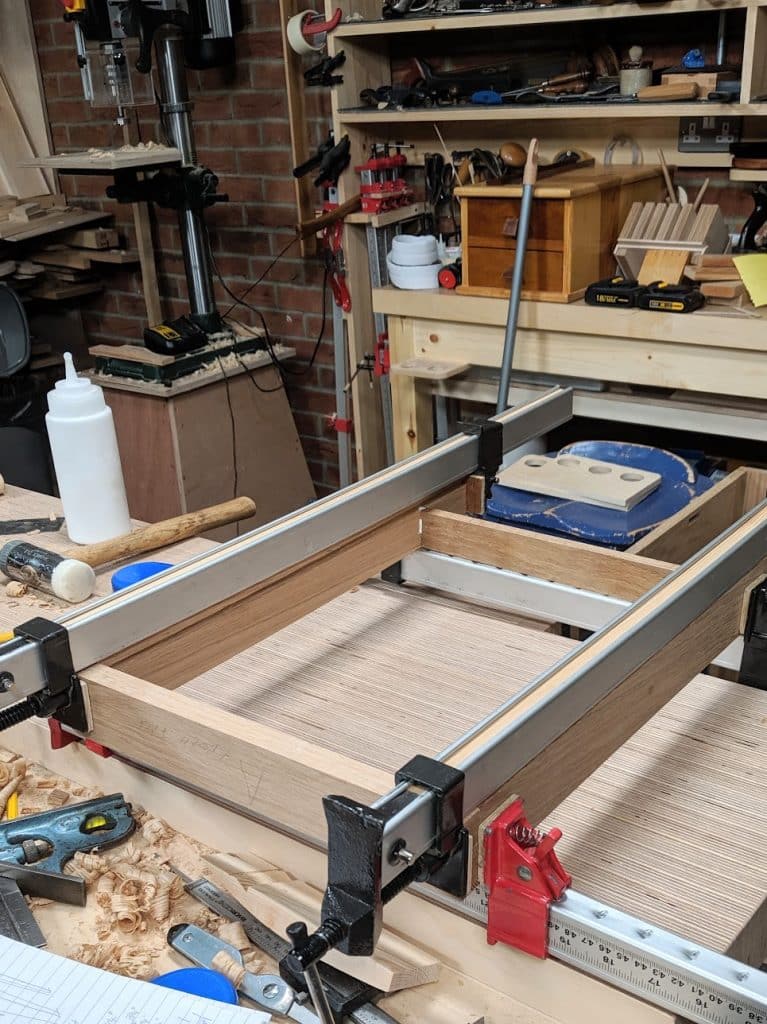
Tongue in cheek, I’m asking the question because even practiced woodworkers often do not realise how efficient hand tool woodworking truly is; how much more new woodworkers finding their feet. Of course those new to woodworking don’t walk into skilled work or ability straight off, but then, conversely, they can think it takes decades to get to the level I’m talking about because people advising them think that that’s the case too. I think that that is also true of those experienced machinist woodworkers too. It’s not boasting on speed, just an attempt to help everyone understand the misconceptions. As the closing generations of apprenticed woodworkers in a range of fields die off, we face a period that’s no longer steeped in the skills and era I speak of. That’s why I do and have been doing what I feel I now do best for this period in the world of woodworking. I’m sowing seeds as it were.
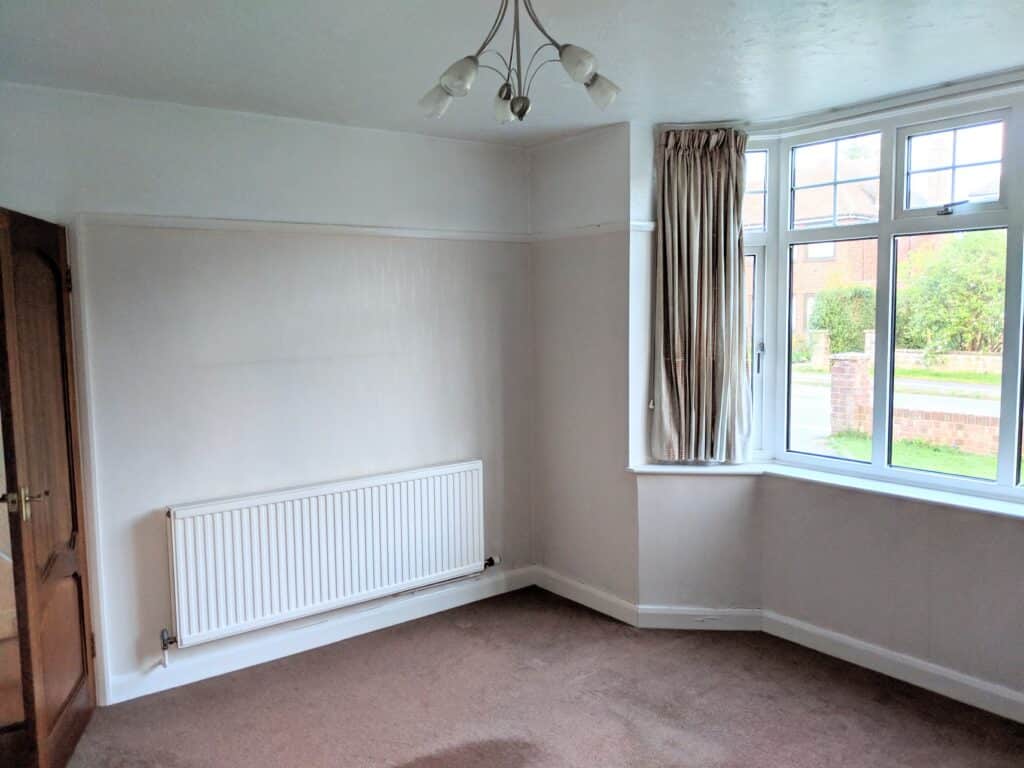
As we approach the new era intent on producing the houseful of furniture for the new house, I find myself considering the patterns by which I gained my knowledge for designing and building the pieces I make. Patterns for this, designing and then actually working to create what’s on my drawing or sketch, I know the thing that made the greatest difference was to recognise the essentiality of order to bring absolute efficiency to my working.
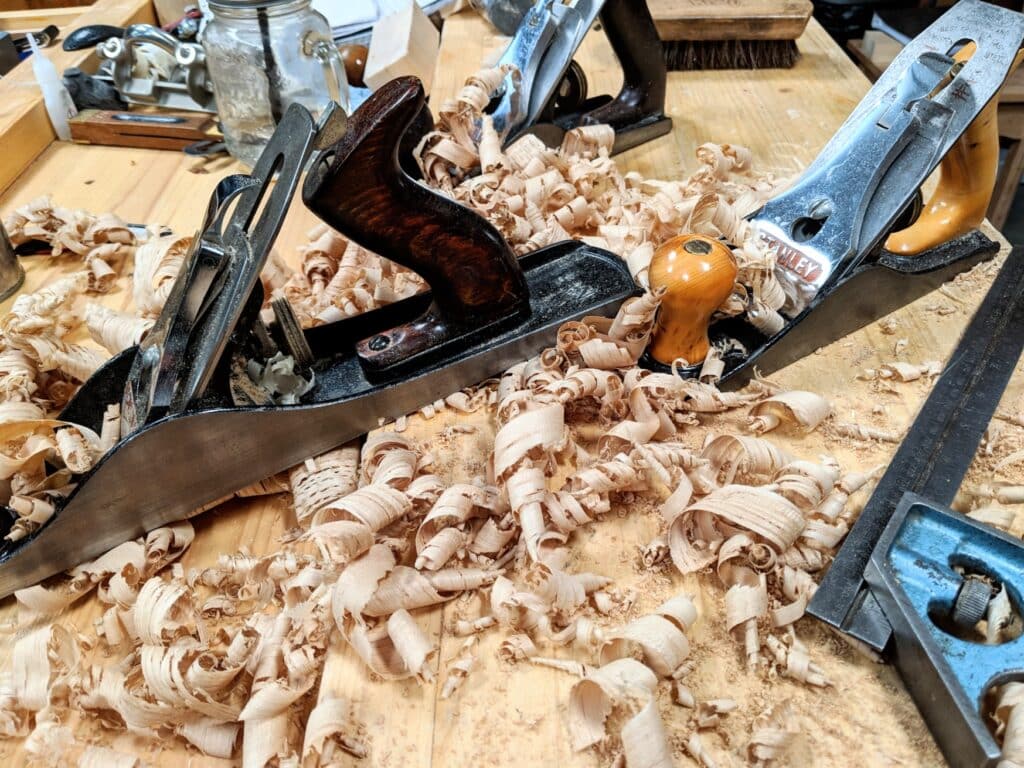
Procrastinate on sharpening a chisel exactly when needed and the wood is bruised, more effort is needed and frustration causes slippage to where damage happens and then too injury often follows. Of all the things I have ever taught others in woodworking throughout my life the single most important thing is developing sharp edges. Moreover, just how do you sharpen those edge tools and saws? When do things vary; the bevel to the chisel, the pitch to the saws you use and only you at that, and what about the burr to your scrapers, the presentation of the tools to the wood. Spokeshaves are diversely different and you can establish your own idiosyncrasies if you know what you’re doing. I am talking accuracy on a different level here. A total putting in order and then more, your putting in order.
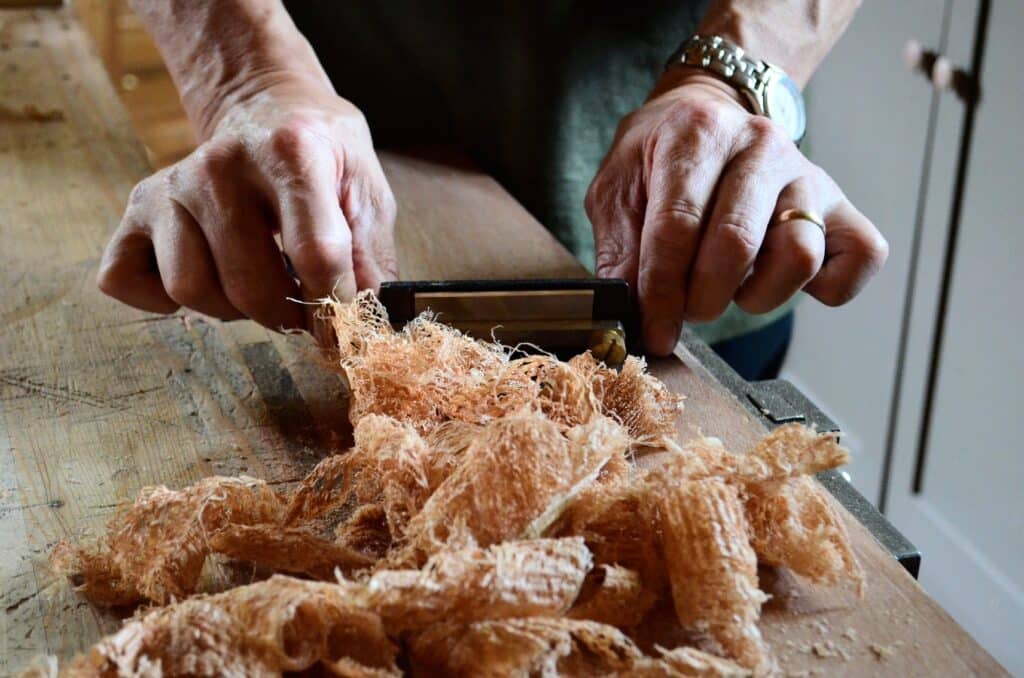
Accuracy is mostly knowing. Knowing is accepting. When you accept that you MUST sharpen and that you MUST sharpen at the right time and periodically rather than once a month a week or even an hour, then you begin to understand. If you refuse to sharpen as needed, which will always be more rather than less than you expect, then you’d best go buy some machines. The beast will go for a little longer and you have powerful motors to replace your insensitivity and the unwillingness of it. Of course, you will soon learn that machines rely on sharpness too, but when you are depending on your own strength you soon see that sharpness means less effort, much less. I’m always happy that machine power often takes longer to set up than the 1 1/2 hours it took me and that I get a certain quality result I cannot get with machines and jigs. I’m happy more that my muscles are still willing to pull and push in flexing to the task of making my designs and that when I stop I feel incredibly fulfilled. We are getting up speed by volume as new woodworkers too are gaining the insights and abilities I speak of. Now I see how they are getting what they were originally searching for when they started their own adventure into woodworking before they were distracted by a sales operatives. They go into sales outlets empowered by just simply knowing what they are looking for. Mentioning dovetails, the sales person is redirected when our woodworkers say, “No, no! I just want a dovetail saw, not a router and bits, a jig as a guide. No thanks! There in is my success.
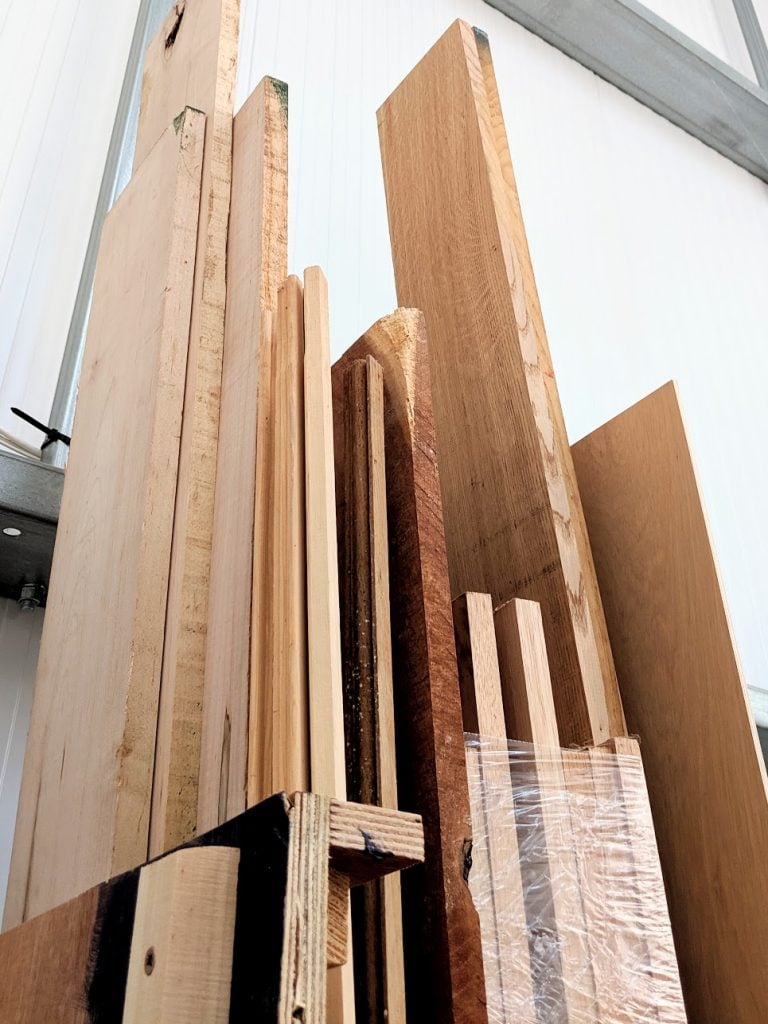
So this week I start my first attempts on new turf. I’m in drafting mode. Measuring rooms and looking at light from windows. North facing or south, east or north east, who knows? Why is there a need to know? Some woods are susceptible to major colour changing when exposed to light. Some change almost not at all. Some woods will look washed out and some will darken dramatically before losing all colour. I’m so hopeful being in the design consideration phase for the houseful of furniture and that’s why I am so excited. Are you joining me on this new and exciting venture? I do hope so. We could be making a new generation of designer makers!


Well said, Paul.
I can’t wait to see where you are going with this!
Quote
Will you be making any plantation shutters for the new home by chance? About to attempt some for my own home in the near future so I would be very interested if you were.
I would love that as well, it’s something I genuinely want to build for my windows, I can’t wait to see what unfolds.
I’m coming along too. It’s my plan to build a house using mostly hand tools and then fill it with hand made furniture. This series couldn’t come at a better time.
Thanks
Darrel
Sprague River, Oregon, USA
Exicted to see the designs, sizing, selected hand cut joinery and different wood spieces to be used. Perhaps hardware incorporating some turned knobs and/or hand profiled handles?
Shellac, polyurethane, lacquer or perhaps some rubbed oil finishes? So many choices! Regardless, I’m certain chisels will be honed and saws will be filed before the wood chips and shavings begin!
Paul,
This is such a great idea! Looking forward to this undertaking.
Thanks for all you do!!!
Charlie Parent.
P.S.
Who is the only man to get his work done by Friday
Wait for it….
Robinson Crusoe
That was a great read. I look forward to seeing the fruition of your design and plan. I may glean a bit from your journey and redo some of my house too. My wife and I built a small cabin 15 years ago before I started following your work. Man how I wish I had known then the skills that I have now. I think I will go out and sharpen some of my tools now… 🙂
When people compare machining time to hand tool time, the comparison often isn’t fair because they only compare the joinery time. I find that hand tool approaches can avoid a great deal of prep work at the finishing step. If you’ve skimmed the work with a plane before doing the joinery and then clean the joints, e.g., plane dovetails flat, you’re ready to go except for a quick scuff with sandpaper. Machine based approaches often have a great deal of sanding to do, perhaps to get rid of planer marks, or to flush up joinery.
I once hung cherry cabinets all the way across a kitchen wall. The wall faced windows and the windows only allowed a portion of the cabinets to get sun light. Luckily, the shadow line ran the entire length of the wall and only cut off the tops of the cabinets because it definitely produced a line in the cabinets over time. Oddly, it was very difficult to see this! The lighting produced the line, but also hid it. I’m still glad I chose cherry. Pulling together natural cherry (cabinets), oak floor, and pine windows with red oak casing was tricky color-wise.
I do appreciate the work you are doing. I’m doing the same thing at my work as I anticipate my exit.
I’m restoring a 110-y-o house to its original glory, replacing plumbing, adding wire+circuits, etc. As I restore the windows (22 of 40 so far, retaining the original glass, making the sash-tracks wind-proof, etc., I find that almost all the work I do I can do a better job with the old tools. My theory is that they were built with old tools, so the old tools fit the material I’m working on.
It’s been a long learning experience but your YT channel, podcasts like this and Fine Woodworking Shoptalk Live have give me decades of insights that I cannot get any other way.
Thanks again.
Ed mentioned something that has with prompted me to ask about mixing timbers in a room, and choices regarding colour. On the one hand I’ve been able to fit out a bedroom with all oak dressing table and chests of drawers, but have wondered if it goes against holy writ to mix different hardwoods in significant sized pieces of furniture in a single room, especially or exceptionally if they are/are not similar shades of darkness or lightness. Now I’ve said it, it seems a little naive. I suppose a lack of certainty stems from my imperfect colour perception, so I don’t detect things that may shout a ghastly mismatch to people with normal colour vision. I am currently getting to grips with building an Organ case in light oak to go in a room which also contains a mahogany (?) 70’s upright piano and a dark faux-Somethingwood Clavinova.
Bearing in mind the vast variety of finishes which can be applied (I’m a big fan of Polyx oil) would it ever be possible to compile a reference list of timbers that might be compatible when similar or contrasted in lightness. Otherwise, possibly more to the point, a list of “Never try and match these…”?
I just like the way you seem to reason things out,common sense and all,like working with a student right in front of you
I watched a video of a man named Eric Hollenbeck who started Blue Ox Millworks and he talked about society being like a train speeding down the tracks. At the front the train is scooping up information but there’s only so much room on the train so there’s a guy in the caboose desperately pitching unused knowledge off the back. Once it’s off the train, it’s gone. (I’m paraphrasing, the video is on YouTube, titled- The Ox – Portrait of a Master Woodworker) When he said that it really stuck with me, and I remember studying timber framing here in the U. S. and someone said that knowledge was nearly lost as “balloon” framing came about and the old timber framers died off taking their knowledge with them. Fortunately a group of people started studying those timber frames still standing and sorta figured out how it was done so they could revive it.
I’m a sucker for history as well as for hand tools, and I think it’s important that this knowledge not be tossed off the caboose of our society. I’d much rather see things like social media, racism, war and the like get tossed. Maybe I’m a bit of a hopeless romantic too… I’m ok with that.